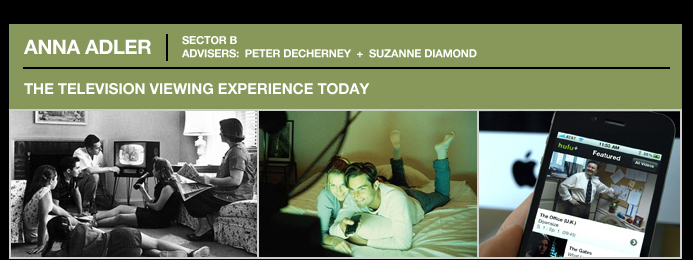
THE TELEVISION VIEWING EXPERIENCE TODAY
Throughout the history of the television, the advent of new and digital media technologies have and are continuing to create innovative routes for the production, distribution, and exhibition of television content and programming. While the arrival of new media has usually replaced the roles of already existing ones, television- on the other hand- has uniquely integrated and blended all emerging media into the very experience of the medium itself. Moreover, television now exists as a "warehouse of contemporary culture that has converged what had gone before."
The developments in past and new technologies are currently and will continue to significantly affect the variety of ways in which viewers access, consume, and experience the medium of television overall. While consumers used to only have access to programming through the traditional television set, audiences today have an increasing number of options for retrieving the types of content that they want to watch, where they want to watch, and how they want to watch it. As contemporary consumers of television are splitting their time among a plethora of viewing platforms, the idea of what it means to "watch TV" now constitutes more meanings than ever before. Consequently, one might predict that viewers are not spending as much time watching television as they initially did in the past. In contrast, the developments of new and digital media technologies have actually enhanced the television viewing experience overall, and today; television is "more diverse, more diffuse, more popular, more powerful, and more innovative" than ever before. This project explores the different relationships and experiences that consumers have with television today.
SECTOR B: Art and Culture of Seeing
ADVISORS: Peter Decherney (ENGL/CINE) | Suzanne Diamond (SEAS)

 Visual Studies
Visual Studies